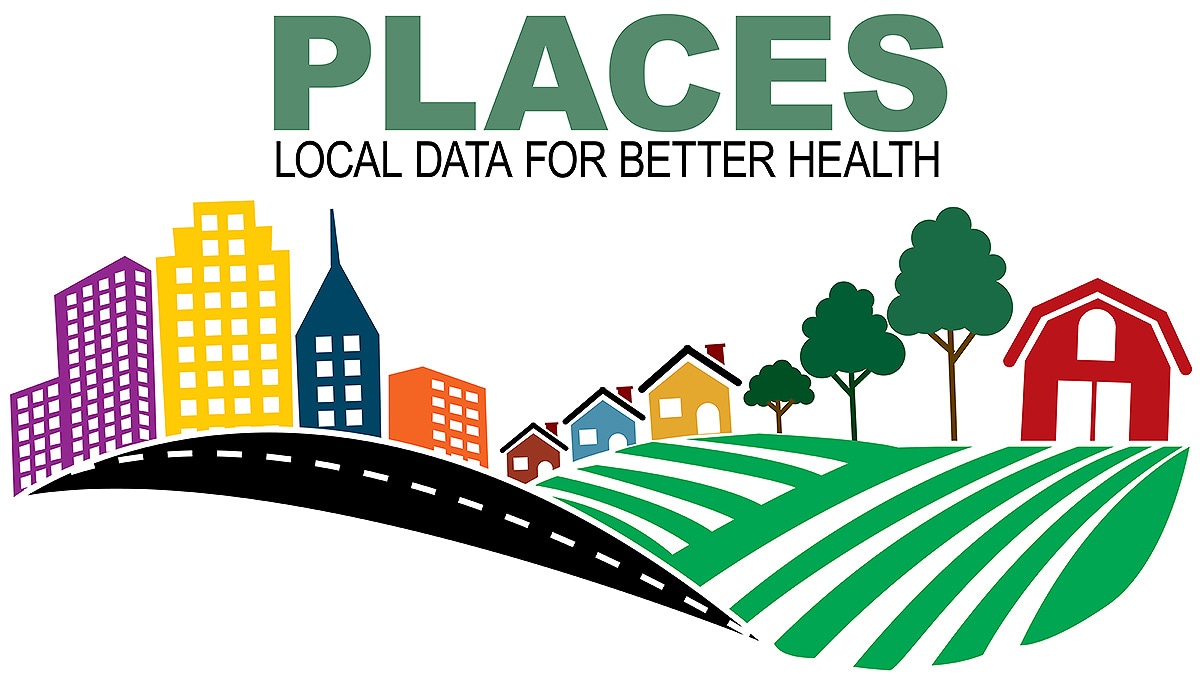Key points
PLACES provides health and health-related data using small-area estimation for counties, incorporated and census designated places, census tracts, and ZIP Code Tabulation Areas (ZCTAs) across the United States. This project, which started in 2015, is a partnership between CDC, the Robert Wood Johnson Foundation (RWJF), and CDC Foundation.

Overview
PLACES is a free, interactive CDC web tool that provides first-of-its-kind chronic disease and other health-related data for all U.S. counties, incorporated and census designated places, census tracts, and ZIP Code Tabulation Areas (ZCTAs).
- Users can view, explore, and download data for all areas of the United States with 50 or more adult residents.
- This system complements existing surveillance data by providing estimates necessary to understand the health issues affecting the residents of local areas of all sizes, regardless of urban or rural status.
How PLACES can improve your health efforts
PLACES is a powerful tool for anyone working to build healthier and more equitable communities throughout the United States— providing data from large, urban communities to smaller, rural communities.
PLACES helps state and local health officials, policy makers, community planner, and nonprofit groups better understand the health of their communities by identifying:
- Local health problems and priority health risk behaviors for action.
- Communities with health disparities to help prioritize investments in areas with the greatest need.
- Overlapping health and social needs in an area.
- Areas that need access to resources and services to support basic health.
PLACES data can be used to help:
- Establish key health objectives, based on identified problems or needs in an area.
- Develop and implement effective and targeted prevention activities.
PLACES data
Data sources:
PLACES provides model-based estimates based on data from Behavioral Risk Factor Surveillance System (BRFSS), Census decennial population counts and annual county population estimates, and the American Community Survey 5-year estimates.
- Small-area estimation methods are used to obtain data on 40 chronic disease and other health-related measures for the entire United States.
- In addition, 9 social determinants of health measures are downloaded from the American Community Survey.
Measures include:
- 12 health outcomes
- 7 prevention practices
- 7 disabilities
- 7 health-related social needs factors
- 4 health risk behaviors
- 3 health statuses
- 9 social determinants of health (or community factors) derived from ACS
Geographic coverage
In the 2024 release, PLACES started to use Census 2020 geographies (this includes Connecticut planning regions as a county equivalent).
- County: 3,144 counties within 50 states and District of Columbia (DC), including 8 county and city consolidated cities.
- Place: 29,923 of 31,617 Places or Census Designated Places (CDP) with Census 2020 adult population count (≥18 years) of ≥50.
- Census tract: 83,522 of 84,112 census tracts in the 50 states and DC that have a Census 2020 adult population count (≥18 years) of ≥50.
- ZCTA: 32,520 of 33,642 ZCTAs in the 50 states and DC with a Census 2020 adult population count (≥18 years) of ≥50.
Unique value of PLACES
- PLACES reflects innovations in generating valid small-area estimates for population health and provides data uniformly across the urban-rural spectrum.
- PLACES is the first-ever project to provide data at multiple local area-levels, including county-, place-, census tract-, and ZCTA-level. These data can be viewed by geographic level as well as by measure and downloaded by users for their secondary analysis.
- PLACES enables retrieval, visualization, and exploration of uniformly defined local area data in the 50 states and Washington, DC for conditions, behaviors, and risk factors that have a substantial effect on population health.
History
- PLACES began in 2015 as the 500 Cities Project, which was launched in collaboration by CDC, the Robert Wood Johnson Foundation, and CDC Foundation.
- The 500 Cities Project (2016-2019) provided city and census tract estimates for 27 chronic disease measures across the largest 500 U.S. cities, using 2010 U.S. Census data. It represented over 103 million people, or about 33% of the U.S. population.
- In December 2020, the 500 Cities Project expanded to become PLACES, offering population-level health estimates for all U.S. counties, places, census tracts, and ZCTAs.
